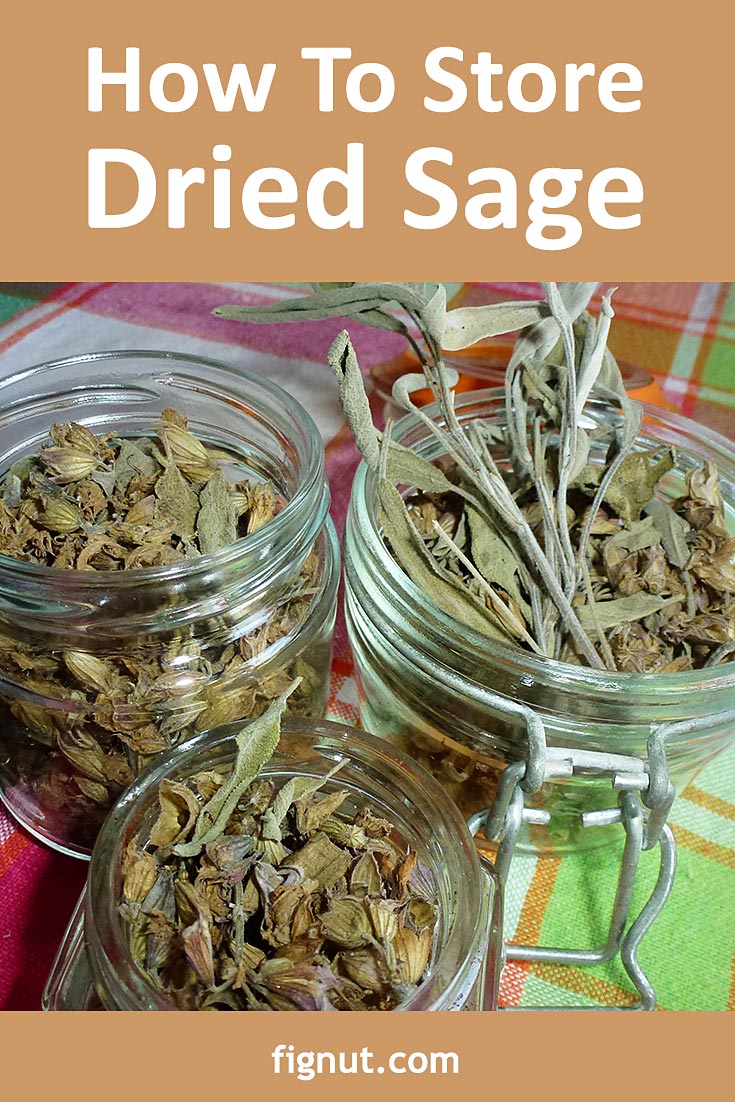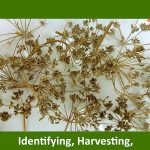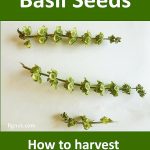Once your sage is harvested and dried, the next thing to do is to store it the right way until you are ready to use it. Depending on how much of the sage you dried, you can choose several options to store. From my experience, the best option is to choose an air-tight container that will ensure your dried sage leaves and flowers lasts for a really long time.
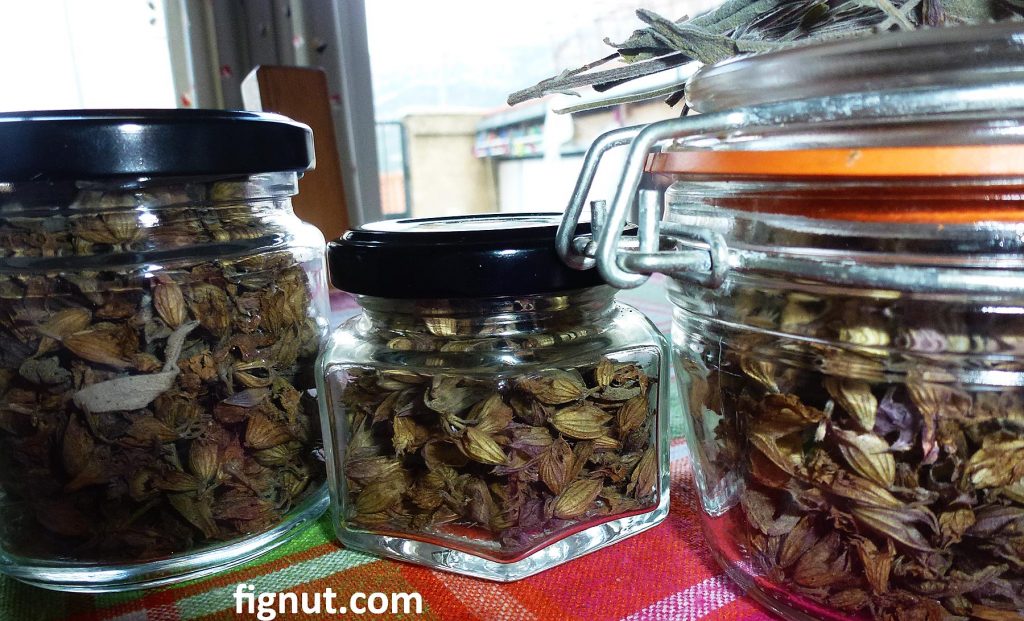
Table of Contents
Important things to remember when storing
The most important thing to check is that sage is properly dried. First of all, if you air dry it (unless you prefer to leave it on the drying tray or as hanging brunches for an indefinite time), it will take you at least two weeks for flowers and leaves to dry properly to be ready for storage. The actual length of time depends on the humidity of the air in your home or garden.
It is properly dry when the flowers and leaves are sharp and breaks easily when squeezed. If you store it while still not dry, the moisture may cause a mold to develop. I never rush with storage. Usually, I store it after a month or two, but you can do it earlier if you have a good reason to rush (travel, transport, house – move, etc..)
Secondly, sage should be stored away from direct sunlight and preferably away from the sources of any heat or humidity. I keep it in the kitchen cabinets, stored in airtight containers and it lasts me for at least a year. It can last much longer, but I usually give whatever is left away to friends once I harvest new flowers and leaves the following spring. Keep it in a cool, dry, and preferably dark place such as a pantry or kitchen cabinet.
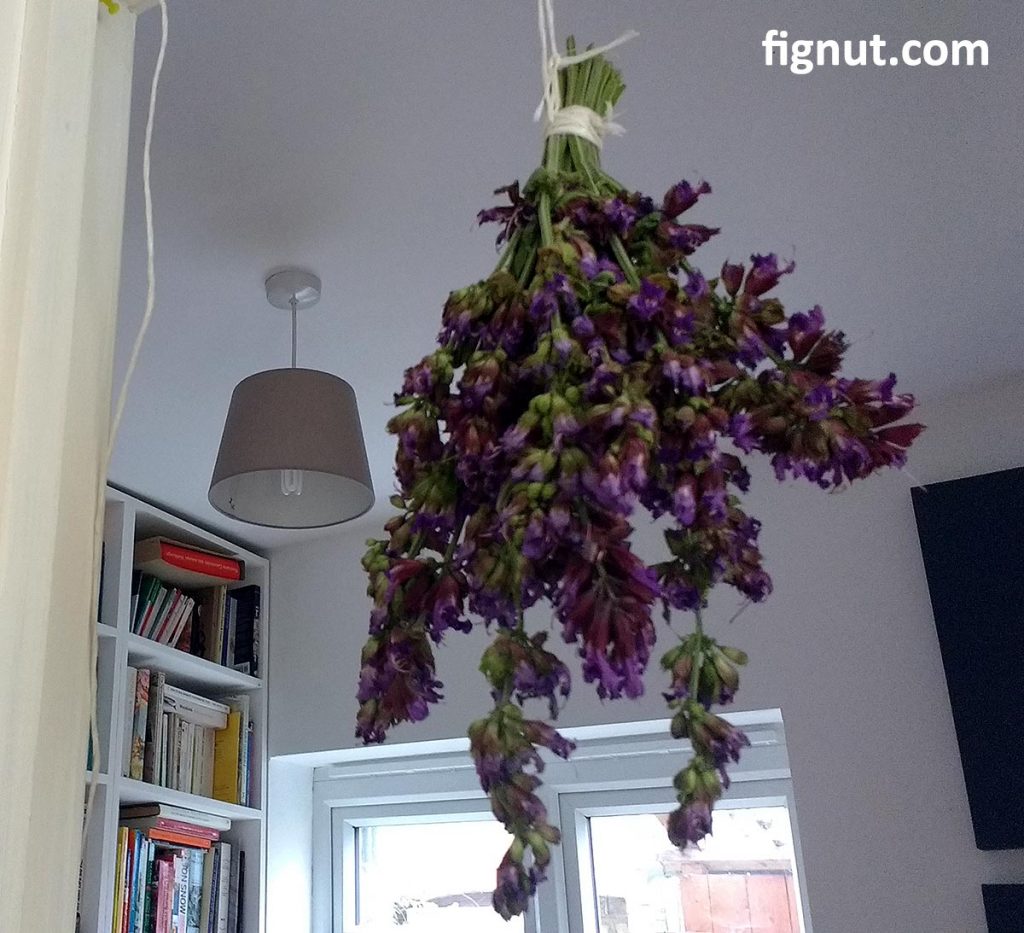
Storing Dried Sage Properly
If you prefer to keep your sage as dried bunches, let them hang on the string somewhere cool and drafty such as a corridor or garage. Sage bundles with flowers and leaves left on the stem can be left hanging for a very long time. They will lose some of their fragrance and aroma but they look very decorative and can still be used for cooking.
Storing Dried Sage Flowers in Airtight Containers
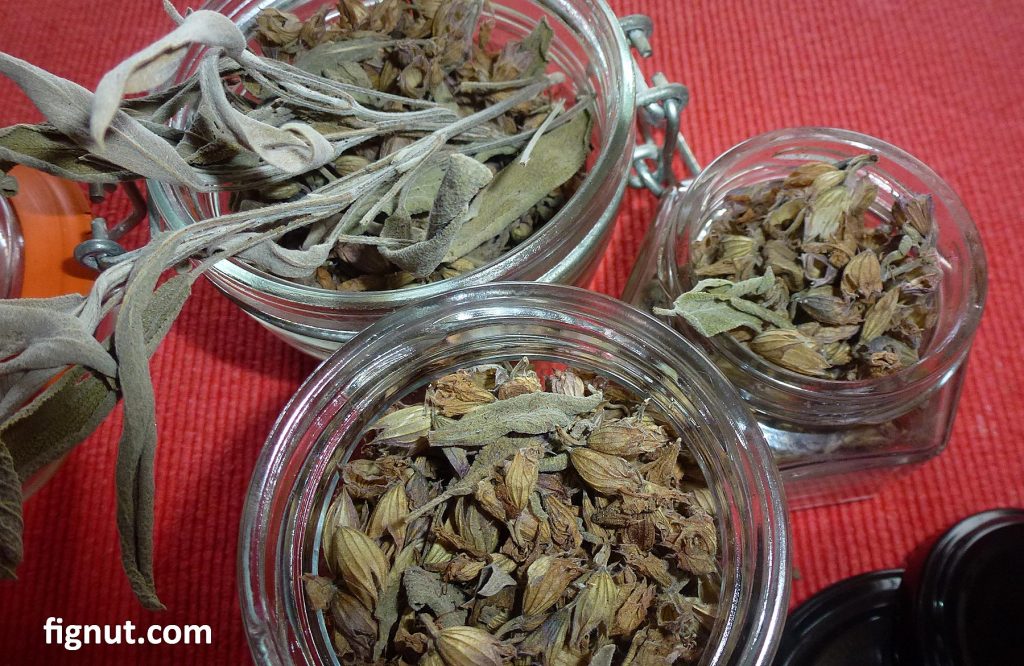
The best way to store sage flowers and leaves is in any type of airtight container: mason jars, non-transparent jars, metal, glass, or plastic. I usually store dried flowers in mason jars (photo above) while for dried leaves I choose larger, more spacious airtight plastic containers (photo below). This way it preserves the freshness for a longer time than hanging dried bunches. Sage stored in transparent jars looks very decorative, so this is my favorite way to store its dried flowers.
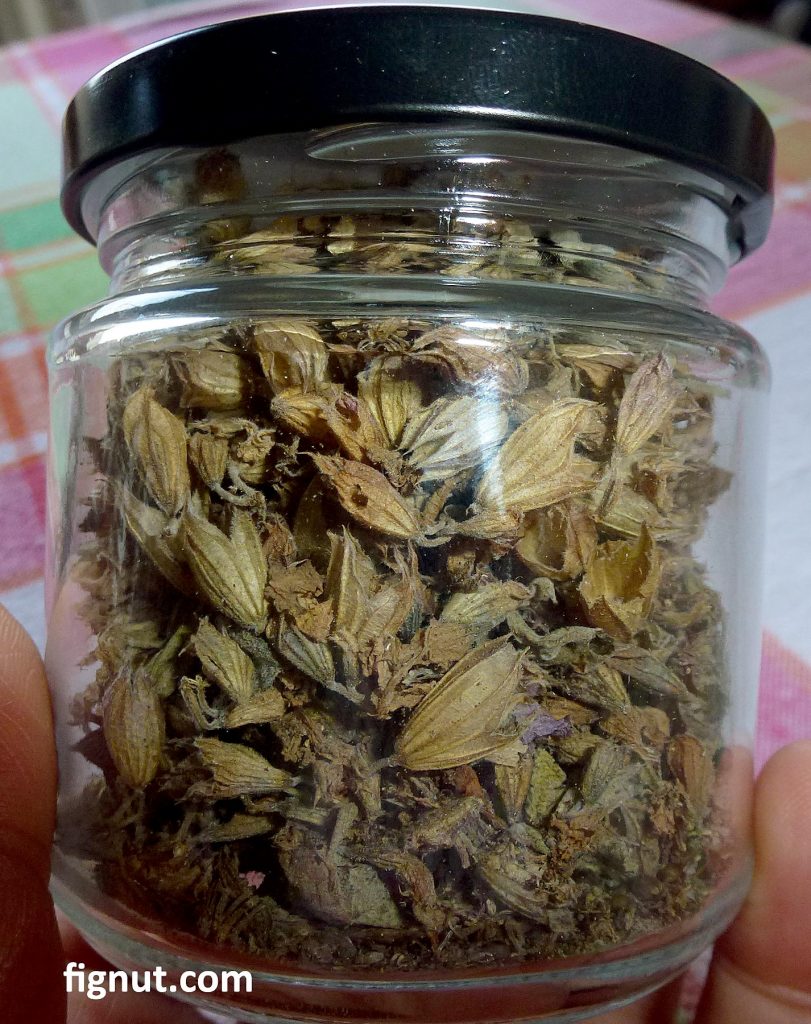
Store Dried Sage Leaves in Storage Boxes
For dried leaves, I prefer to use larger containers, such as airtight plastic storage boxes (as one in the photo below). These are more spacious containers and therefore my dried leaves stay unbroken. I crumble leaves just before using them. Ideally, the containers should be non-transparent, however, I like to see my leaves. And I use it in cooking a lot so they never last too long. Avoid boxes with any ventilation option, as any moisture should be prevented from entering the container.
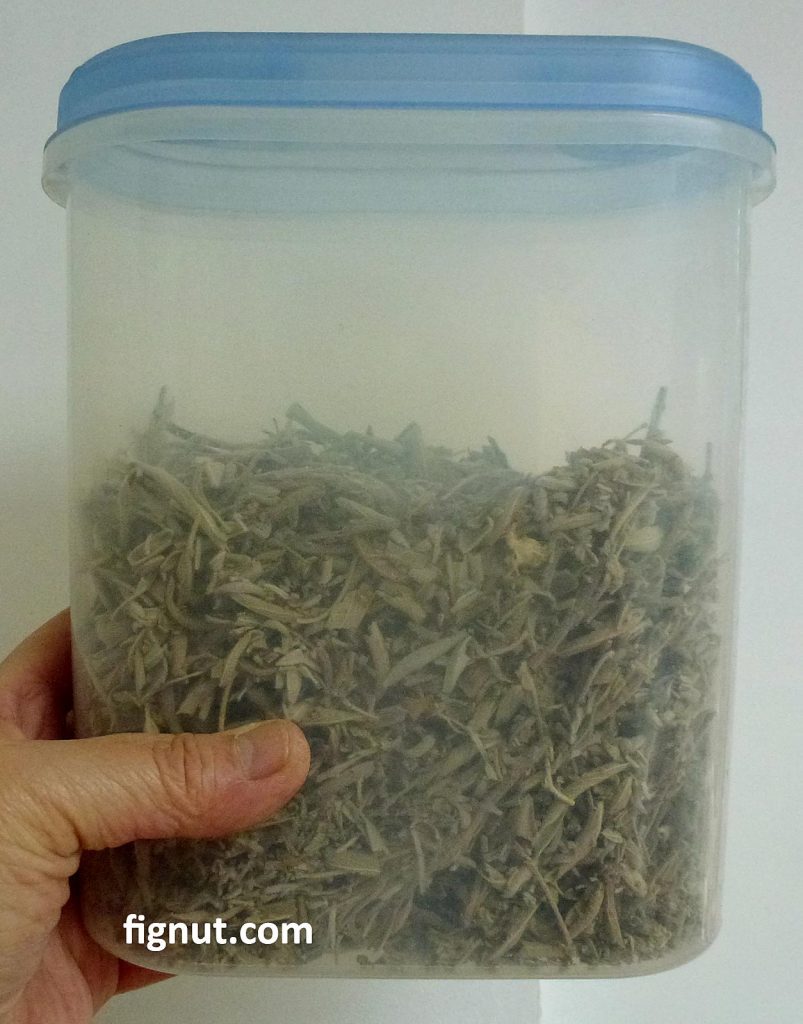
Storing large amounts
If you have larger amounts of dried sage, the cheapest way to store it is to keep it in a large recycled water bottle. I collected these bottles as cheap storage options for a lot of different things including dried herbs.
I like them as they have a wide neck which makes it easy to access your stored herbs by pouring them in and out. See how I store larger amounts of dried lavender here. The alternative is to buy a plastic airtight container of the size that is suitable for your need such as stackable storage boxes with lids.
Can Dried Sage Go Bad?
Yes, sage can go bad if it is stored in an inappropriate way or if it is not dried well. Make sure your containers are tightly closed and moisture-free. Store it once you are sure it is properly dried.
How long does Dried Sage last?
It can last for several years although in my experience up to one-year-old dried flowers and leaves still have a very strong aroma. With time the aroma and fragrance fade, but it is still usable. I dry sage each spring and giveaway the last year’s ones while replacing it with newly dried ones.
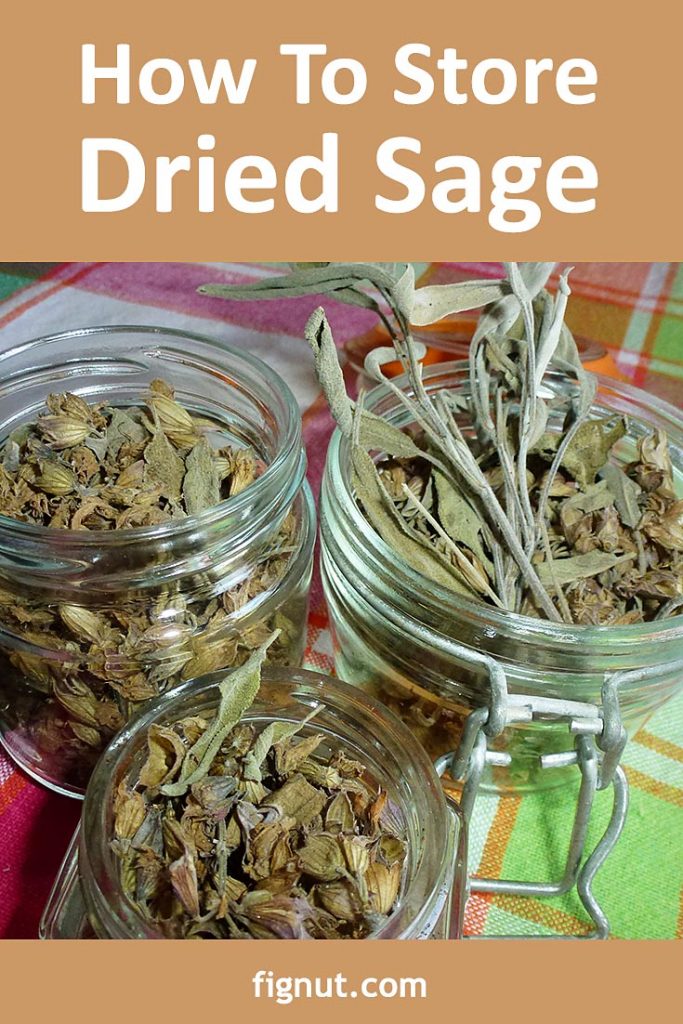
My other articles about drying food: drying sage, sun-drying apricots, drying lavender, drying figs, storing dried figs
If you are interested in getting some of my dried sage, get in touch – I may be able to post you a small bag.
